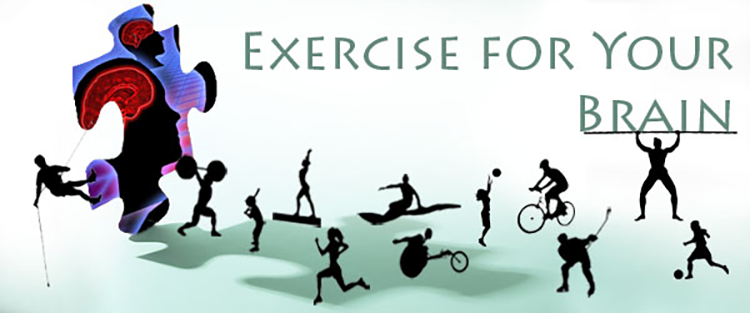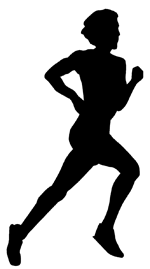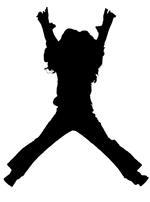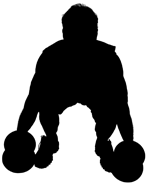
Let's Get Moving

There are those who like to run. Other people like to lift weights. Still others find an aerobics class or game of soccer to be their favorite way to exercise. But these are just a few ways people work out. There are many more.
With all the ways to exercise it is important to know that they all help you grow strong and keep you healthy. Exercise also reduces stress and is good for your brain as well as your body. There is even a way to use exercise to help you with your homework and that science project.
Now before you run out and get started experimenting, it will help to learn a little about human physiology and exercise. Once you know some basics you will then be ready to get to work. Keep in mind that scientists use a set of specific steps when building their experiments called the scientific method.
Human Physiology and Energy
All animals need and use energy. As humans, we eat food to get the energy we need to do work. It doesn’t matter if we eat a green salad or a juicy steak, our bodies take the energy from the food we eat to make and store the energy we can use for things like running, jumping, and even doing homework. In fact, humans use energy all the time. This is because our cells are always busy and always at work, even when we are sleeping.
The energy our bodies use to do work is mostly either fat or a sugar called glucose. If we do not use all the energy leftover after eating each day, our bodies store it as fat for later use. If we continue to eat more energy than our body uses, the buildup will cause us to gain weight in the form of fat. Some fat is good but too much fat can be harmful to your health. In addition to eating a healthy diet, one of the best ways to keep your body in “energy balance” is through, you guessed it, exercise.
Exercise

There’s swimming, running, jumping jacks, yoga, rock climbing, weight lifting, and sprinting, and that’s just a small start. There are so many different kinds of exercise that it can be hard to group any of them together. But there is one way that we can think about how exercises differ – the amount of time you can keep doing a certain exercise. Some kinds of exercise you can only do for a few seconds or minutes at a time, while other kinds you can do over longer periods. The length of time you do an activity is called duration. Both types of exercise will probably make you breathe a lot, but the difference is in how much oxygen is getting to your muscles.
During longer periods of exercise, the oxygen you get from breathing heavily may be enough for your cells. Because your cells are using that oxygen to make energy, this is called aerobic (with air) exercise.
During very intense activities like sprinting or lifting weights, you may still be breathing hard, but your cells need a much larger amount of oxygen – more than your lungs can deliver. Even though your cells don’t have enough oxygen, they still need to make more energy and they do this through a different process. This other process does not use oxygen, so it is called anaerobic (without air) exercise.
Lots of exercises actually use both processes because just one will not make enough energy. Usually, the higher the intensity of exercise the more energy it will require.
Aerobic Exercise
Running, swimming, rowing, and bicycling are just a few of the exercises that can get your heart pumping. Try this: do 25 jumping jacks in two minutes and then feel what happens to your breathing and heart rate. With aerobic exercise, your heart rate and breathing increase so your body can deliver oxygen to your working muscles.

Back to the jumping jacks. If you increase the intensity and duration of exercise by, say, doing 50 jumping jacks a minute for two minutes, you will see an even bigger increase in your heart rate and breathing. The heart itself is a muscle just like the ones in your arms and legs.
The idea behind aerobic exercise is to train your heart and muscles to be able to use energy more efficiently. When your heart is better able to deliver oxygen to your working muscles, exercise may seem easier for you.
It is important to do aerobic exercise to keep your heart healthy. People who do aerobic exercise on a regular basis are less likely to be overweight and more likely to be healthier. How much aerobic exercise is needed depends on your age. If you are young, at least 60 minutes of aerobic activity is recommended for each day.
Anaerobic Exercise
Lifting weights at the gym or climbing the rock wall may not leave you breathless, but they are exercise. Anaerobic exercise is just as important to your health. For example, resistance training, like weight lifting, helps your muscles and bones get stronger. Without enough strength it may be harder for you to carry heavy packages or lift boxes.

Try this: how many push-ups can you do without stopping? Although you are not lifting weights, you are using your body weight and gravity as resistance. Push-ups are a good form of anaerobic exercise because most of your muscles are working to push your body. Although lifting weights at a gym may seem cool, it is important that you make sure you know how much weight you can handle and how to do the exercise properly so you don’t get hurt. Unlike aerobic exercise, there are no specific recommendations for kids. So it is important that you work with somebody to develop a good program. If you think you might like to try weight-lifting, check with your school PE teacher, or local YMCA and see if they can help you get started.
Exercise for Your Brain

You can exercise for your health and you can also use your exercise routine for your brain. By designing an experiment around your workouts and activities you can soon learn how exercise changes your body. You might expand your research to include your family and friends and maybe even turn it into a fun science project for school.
Additional images via Wikimedia Commons. Yoga in nature image by Matthew Ragan.
Read more about: Exercise for Your Brain
Bibliographic details:
- Article: Exercise for Your Brain
- Author(s): CJ Kazilek, Gabriel Shaibi
- Publisher: Arizona State University School of Life Sciences Ask A Biologist
- Site name: ASU - Ask A Biologist
- Date published: 12 Aug, 2009
- Date accessed: 24 May, 2025
- Link: https://askabiologist.asu.edu/explore/exercise-your-brain
APA Style
CJ Kazilek, Gabriel Shaibi. (Wed, 08/12/2009 - 10:25). Exercise for Your Brain. ASU - Ask A Biologist. Retrieved from https://askabiologist.asu.edu/explore/exercise-your-brain
Chicago Manual of Style
CJ Kazilek, Gabriel Shaibi. "Exercise for Your Brain". ASU - Ask A Biologist. 12 Aug 2009. https://askabiologist.asu.edu/explore/exercise-your-brain
MLA 2017 Style
CJ Kazilek, Gabriel Shaibi. "Exercise for Your Brain". ASU - Ask A Biologist. 12 Aug 2009. ASU - Ask A Biologist, Web. https://askabiologist.asu.edu/explore/exercise-your-brain

Not all exercise is the same, but all exercise can help you live a healthier life.
Be Part of
Ask A Biologist
By volunteering, or simply sending us feedback on the site. Scientists, teachers, writers, illustrators, and translators are all important to the program. If you are interested in helping with the website we have a Volunteers page to get the process started.




